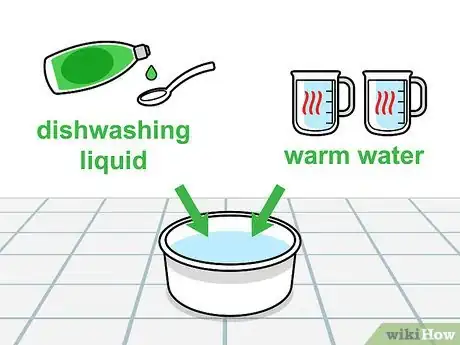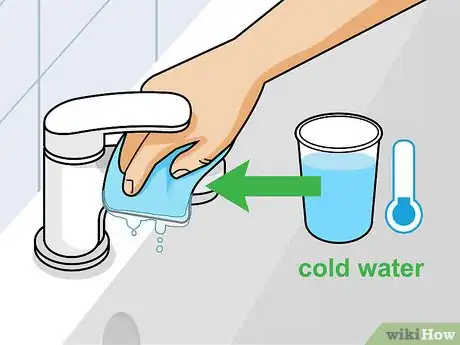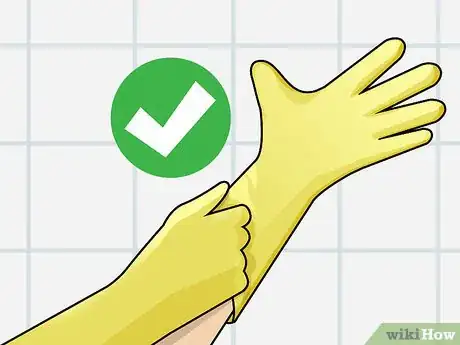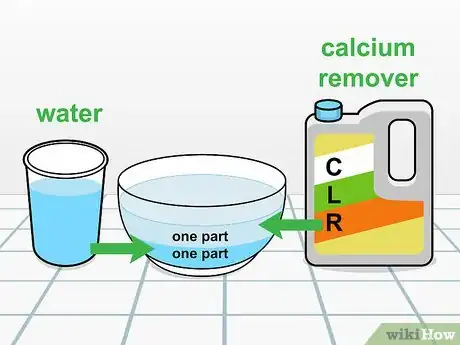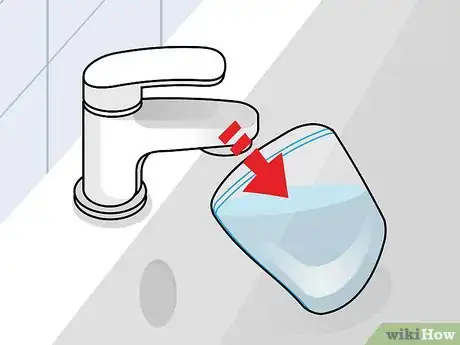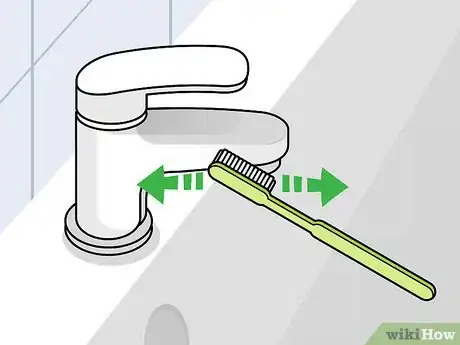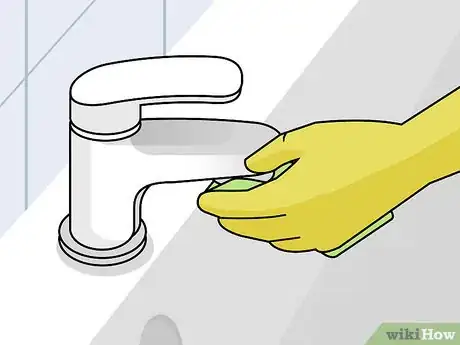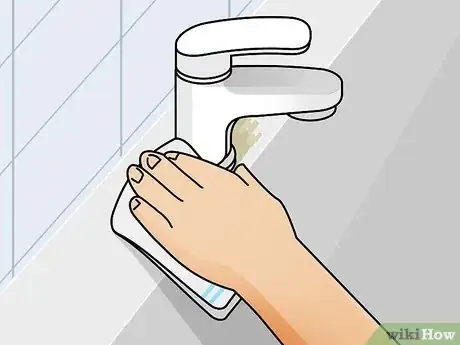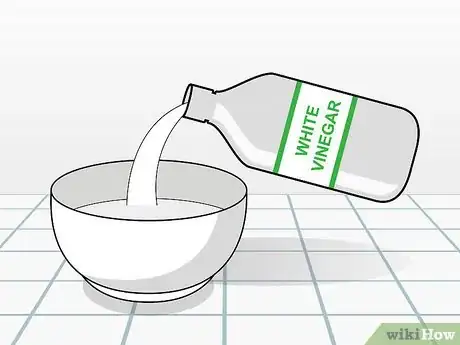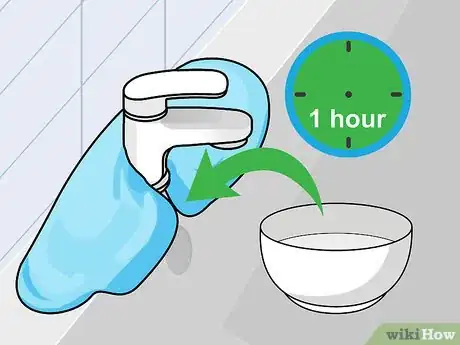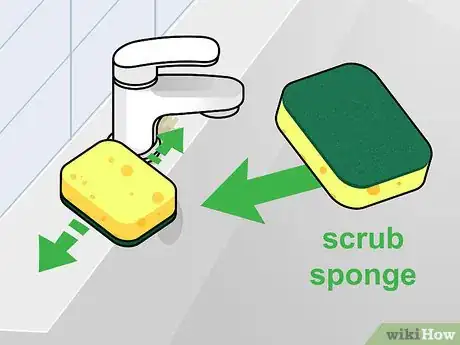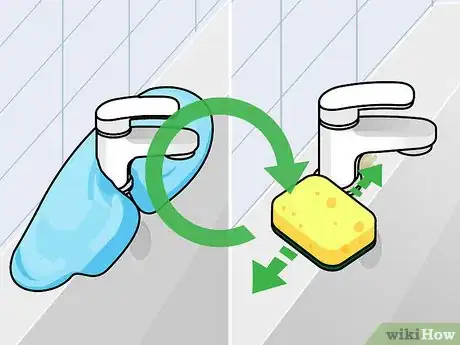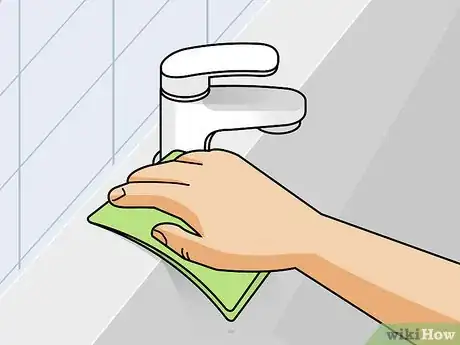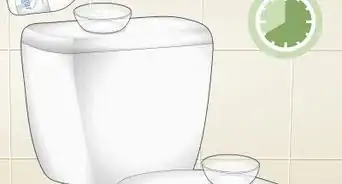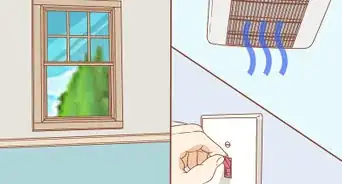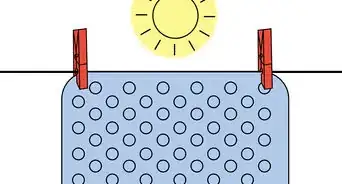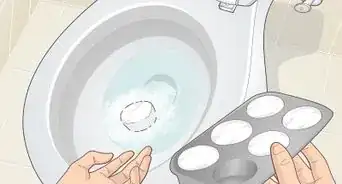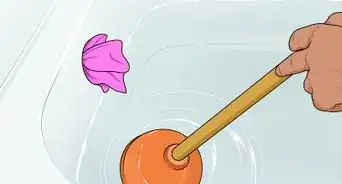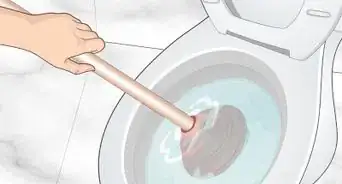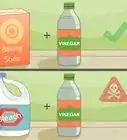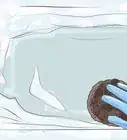This article was co-authored by Susan Stocker. Susan Stocker runs and owns Susan’s Green Cleaning, the #1 Green Cleaning Company in Seattle. She is well known in the region for outstanding customer service protocols — winning the 2017 Better Business Torch Award for Ethics & Integrity —and her energetic support of green cleaning practices.
This article has been viewed 163,032 times.
Everyone likes a shiny, clean faucet. Unfortunately, if you have hard water, calcium deposits are a common problem. However, you don't have to give up. With common household items and a bit of elbow grease, you can remove calcium from the tap and surface of the faucet. To make this job a bit easier, you should also do a routine cleaning at least a few times a month.
Steps
Performing Routine Cleanings
-
1Use a dish soap mixture. Opt for a mild detergent to prevent damage to the faucet surface. Pour 1 to 2 tablespoons (15 to 30 mL) of dishwashing liquid in a small bowl. Add 2 cups (0.47 L) of warm water. Mix the ingredients with a dining utensil to create some suds.[1]
-
2Scrub the faucet. Soak a regular washrag in the soap mixture. Move in a gentle circular motion across the surface. Wash the base, handle, and neck of the faucet thoroughly.[2]Advertisement
-
3Scrub grimy areas with a toothbrush. Cover the bristles of an old toothbrush with baking soda. Add a few drops of water to create a baking soda paste, if you choose. Move in a gentle back-and-forth motion until the surface is free of grime.[3]EXPERT TIPSusan Stocker runs and owns Susan’s Green Cleaning, the #1 Green Cleaning Company in Seattle. She is well known in the region for outstanding customer service protocols — winning the 2017 Better Business Torch Award for Ethics & Integrity —and her energetic support of green cleaning practices.Cleaning Guru

 Susan Stocker
Susan Stocker
Cleaning GuruOur Expert Agrees: Spray or spread your product directly onto the faucet. Use a tile brush or toothbrush to get into the tiny areas or crevices. Finish by wiping carefully with a microfiber cloth.
-
4Clean small cracks with dental floss. Cut off a 12 inch (30.48 cm) piece of floss. Place the string between the cracks or spaces in the surface of the faucet. Move in an up-and-down motion, as you would when you floss your teeth.[4]
-
5Rinse the surface with cold water. Dampen a clean cloth. Move it over the surface to clear away the soap mixture, grime, and gunk from the floss cleaning. Continue to rinse until the surface is free of dirt.
-
6Dry the surface with a microfiber cloth. Use gentle back-and-forth strokes along the entire surface. Continue until the surface is completely dry. This step will also leave a nice shine.
Removing Calcium Buildup from the Tap
-
1Wear rubber gloves. They'll protect your skin from the chemicals and irritants in many calcium removers. Make sure they're free of dirt before you start to clean. Use gloves that cover all or most of your forearm, in case the cleaner splashes.
- You can skip this step if you're using vinegar.
-
2Dilute calcium remover in water. Mix one part calcium remover, such as CLR, and one part water in a bowl or old plastic container. Choose a container bound for the recycling bin. For most taps, 1 to 2 tablespoons (15 to 30 mL) of each ingredient is enough.[5]
- If you don't have much calcium buildup, you can use undiluted white vinegar instead of CLR and water. This method will take much longer, about 24 hours, but it's harmless to bare skin and safe for most faucet finishes.[6]
- Avoid using calcium remover or vinegar on iron or nickel faucets.
- These cleaners will remove the finish along with the gunk you're cleaning.
- Read your owner's manual or contact a local plumber for advice.[7]
-
3Pour the mixture into a plastic baggie. Use a regular-sized sandwich bag. It doesn't matter if the baggie has a zip seal. Pour carefully. If you're concerned about spilling the mixture, pour it into the baggie through a funnel.[8]
-
4Attach the baggie to the faucet. Hold the baggie at a slight angle so that the mixture builds up in one of the corners. Carefully slide the open end of the baggie over the faucet. Then submerge the tap in the mixture. Securely fasten the baggie to the faucet with a rubber band. Let the tap soak for one to two hours.[9]
-
5Remove the baggie. Undo the rubber band. Carefully slide the baggie off of the faucet. Do this slowly. Read the label on the cleaner to check for disposal instructions. Cleaners like CLR are biodegradable and can be poured down the drain or toilet.
-
6Scrub off the loosened buildup. Use an old toothbrush or magic eraser. Scrub in a gentle back-and-forth motion. Periodically rinse the toothbrush or magic eraser if it gets too gunky. Continue to do this until the buildup is completely removed.[10]
-
7Dry the faucet with a microfiber cloth. Move in a gentle circular or back-and-forth direction. Pay special attention to the tap to slow future calcium buildup. Continue until the faucet is completely dry.
Removing Calcium from the Faucet Plating
-
1Dry the faucet with a clean dish towel. A wet surface will dilute the vinegar and result in an incomplete cleaning job. Move the towel over the entire base of the faucet. Make sure every last drop of water is absorbed.[11]
-
2Use white vinegar. Fill a small bowl with undiluted white vinegar. Soak a washrag or old piece of clothing in the vinegar until it's saturated. Don't wring out any excess.[12]
-
3Drape the cloth over the affected areas. Cover them completely. Press down on the cloth to make sure it has complete contact with the surface. Leave the cloth in place for at least an hour.
- If any vinegar is left in the bowl, pour it over the cloth to further saturate the calcium-coated area.[13]
-
4Scrub the faucet with a scrub sponge. Use the textured side of the sponge. Use a back-and-forth motion. Don't scrub too hard, since this can scratch the finish. You should see the calcium deposits start to come off.[14]
-
5Repeat the process for stubborn buildup. Resaturate the rag in vinegar and let it sit on the deposits. Cover only the areas where you still see calcium buildup. Let the cloth sit for another hour and scrub the affected areas to remove the calcium.[15]
-
6Dry the faucet with a microfiber cloth. Use gentle circular or back-and-forth strokes. This will polish the surface in addition to drying it. Continue until no water remains.[16]
Community Q&A
-
QuestionHow do I clean up staining on a faucet?
 Community AnswerTry using vinegar in a resealable bag. Tie it around the faucet of your sink and leave it there overnight to see what happens.
Community AnswerTry using vinegar in a resealable bag. Tie it around the faucet of your sink and leave it there overnight to see what happens.
Warnings
- Don't use an abrasive cleaning product on your faucet before you study your manufacturer's warranty. You could void it if you perform intense cleaning that results in damage.⧼thumbs_response⧽
Things You'll Need
- Calcium remover
- Sandwich baggie
- Rubber band
- Toothbrush
- White vinegar
- Washcloth
- Dishwashing liquid
- Microfiber cloth
- Baking soda
- Dental floss
References
- ↑ https://maidsbytrade.com/how-to-clean-faucets/
- ↑ https://maidsbytrade.com/how-to-clean-faucets/
- ↑ https://maidsbytrade.com/how-to-clean-faucets/
- ↑ https://maidsbytrade.com/how-to-clean-faucets/
- ↑ http://www.twotwentyone.net/how-to-clean-calcium-off-faucets/
- ↑ https://www.youtube.com/watch?v=uX0wKcsgwg0
- ↑ http://commonsensehome.com/how-to-remove-hard-water-buildup-from-faucets-and-showerheads/
- ↑ http://www.twotwentyone.net/how-to-clean-calcium-off-faucets/
- ↑ http://www.twotwentyone.net/how-to-clean-calcium-off-faucets/
- ↑ http://www.twotwentyone.net/how-to-clean-calcium-off-faucets/
- ↑ https://www.youtube.com/watch?v=aOudR7RiDJc
- ↑ https://www.youtube.com/watch?v=aOudR7RiDJc
- ↑ https://www.youtube.com/watch?v=aOudR7RiDJc
- ↑ https://www.youtube.com/watch?v=aOudR7RiDJc
- ↑ https://www.youtube.com/watch?v=aOudR7RiDJc
- ↑ https://www.youtube.com/watch?v=aOudR7RiDJc
- ↑ https://www.youtube.com/watch?v=lNP-NYWsCyA
About This Article
To clean the outside of a faucet, start by mixing dishwashing liquid and warm water. Then, soak a washrag in the soap mixture and move it in circular motions across the surface of the faucet. For particularly grimy areas, cover the bristles of a toothbrush with baking soda, add a few drops of water, and scrub the surface. In order to remove calcium buildup from the tap, pour undiluted white vinegar into a plastic bag, and attach it to the faucet with a rubber band. After 24 hours, remove the bag and scrub off the loosened buildup with an old toothbrush. To learn how to remove calcium from your faucet plating, keep reading!
